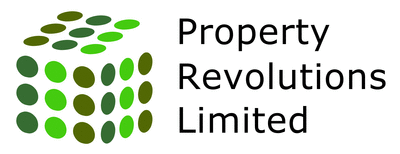What lies ahead...
As leading UK retrofit specialists, PRL has witnessed significant changes in the industry over the past few years. The urgency of decarbonisation, rising energy costs, and stricter building regulations have all contributed to a rapid evolution in retrofit practices. Now that we find ourselves once again at the start of a new year, it is essential to consider what lies ahead for homeowners, landlords, and industry professionals alike.
The drive for energy efficiency
We feel that one of the biggest drivers for retrofit in 2025 will continue to be energy efficiency.
The UK government’s net-zero targets mean that buildings must become significantly more energy-efficient, and retrofitting will be key to achieving this goal.
Homes and commercial buildings will need to meet stricter energy performance standards, making insulation, glazing, and heating system upgrades more important than ever.
The role of legislation and policy changes
Government policies will play a crucial role in shaping the retrofit sector. In 2025, we anticipate further tightening of Minimum Energy Efficiency Standards (MEES) for rental properties, which could require landlords to invest heavily in retrofitting measures.
There is also speculation that new grants and funding schemes will be introduced to help homeowners and businesses upgrade their properties.
The Future Homes Standard, set to come into effect in 2025, will influence the way we retrofit existing homes. While primarily focused on new builds, the standard will raise expectations for energy efficiency, potentially influencing regulations for existing buildings.
The growing importance of Heat Pumps
With gas boilers being phased out in new builds, the demand for low-carbon heating solutions will continue to rise. Heat pumps are expected to become more common in retrofit projects, with both air-source and ground-source heat pumps leading the way. Improved government incentives and reduced installation costs should make these technologies more accessible to homeowners.
However, retrofitting heat pumps into older homes can present challenges, especially when insulation is inadequate. In 2025, we will likely see more developments in hybrid heating systems, combining heat pumps with traditional boilers to improve efficiency and reduce reliance on fossil fuels.
Smart Technologies and Energy Management
Another major trend for 2025 will be the integration of smart technologies into retrofit projects. With energy prices remaining unpredictable, homeowners will look for ways to monitor and reduce their consumption more effectively. Smart thermostats, AI-driven energy management systems, and battery storage solutions will become standard features in retrofitted properties.
The introduction of demand-side response (DSR) programs, where households and businesses can shift their energy usage to off-peak times, will further enhance energy efficiency. Homeowners who retrofit with smart systems will not only lower their bills but also contribute to the stability of the national grid.
The challenge of skills and labour shortages
While demand for retrofit is growing, the availability of skilled workers remains a challenge. In 2025, the industry must address the skills gap by training more professionals in energy efficiency measures, low-carbon heating, and airtightness solutions.
Government initiatives and partnerships with colleges and training providers will be essential to developing a workforce capable of delivering high-quality retrofits at scale.
The financial side of retrofit
One of the biggest barriers to retrofit projects is cost. Homeowners and landlords often struggle to justify the upfront investment, even when long-term energy savings are substantial. In 2025, we expect to see new financing models emerge, such as green mortgages, pay-as-you-save schemes, and low-interest retrofit loans.
Energy suppliers and local authorities may also introduce innovative funding mechanisms, allowing homeowners to spread the cost of improvements over time. Grants and subsidies will continue to play a role, but there will likely be an increased emphasis on private-sector financing solutions.
The role of fabric-first approaches
A fabric-first approach - prioritising insulation and airtightness before installing new heating systems - will remain a core principle in retrofit projects.
In 2025, we expect to see a shift towards whole-house retrofit solutions rather than piecemeal upgrades. The PAS 2035 standard, which ensures a high-quality, holistic approach to retrofit, will become more widely adopted across the industry.
Homeowners will become more aware of the importance of airtightness, thermal bridging, and ventilation strategies. As a result, demand for innovative insulation materials, such as aerogels and vacuum insulation panels, will likely increase.
Looking Ahead: A Sustainable Future for Retrofit
As we move into 2025, the retrofit sector will play a critical role in meeting the UK’s sustainability goals. With advancements in technology, improved government support, and a growing awareness of the benefits of energy efficiency, the future looks promising.
For homeowners and landlords, 2025 will be a year of opportunity. Investing in retrofit measures will not only enhance comfort and reduce energy bills but also increase property value and future-proof buildings against changing regulations.
As a retrofit specialist, I am excited about what lies ahead and look forward to helping more people make their homes and businesses energy-efficient for the future.
Carl Dodd, Property Revolutions Ltd.


